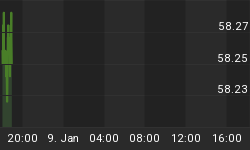Although today's nonfarm payrolls came in less than the 100K mark, they support our forecast for further temporary dollar gains into the rest of the year.
The unchanged 4.7% unemployment rate in the November payrolls report is the lone positive component of a predominantly weak data set. Payrolls rose by 94K from an upward revised 170K in October (initial at 166K) and downward revised September figure to 44K from 96K. The figure was closer to our 90K forecast versus consensus of 85K. The stronger than expected 0.5% increase in average hourly earnings is likely to prevent the Fed from going for the more aggressive 50-bps cut option, due to upside price inflationary pressures.
Retail jobs showed a net increase of 24K after 3 consecutive down months. Pre-holiday hiring must be the factor as November retail jobs consistently produced a net increase over the past 3 years. The erosion in construction jobs worsened, with a 24K net loss, making it the 9th down month over the past 12 months. Manufacturing lost a net 11K from a loss of 15K, adding the number of straight negative months to 17.
Services added a net 127K jobs, less than the 192K in October and less than the 3-month average of 134K. Hospitality, professional/business services and education showed weaker job creation. The Government continued to fill the void with the creation of 30K jobs following 39K in October, overshooting the 3-month average of 25K.
With payrolls falling below their 3-month average in 7 of the last 12 months, and coming in under 100K in 5 out of the last 6 months, the labor market is increasingly showing signs of a recessionary environment. Once retail jobs remove their seasonal pre-holiday shopping hiring, we do not expect the void to be filled in, manufacturing, construction or finance related jobs. This is likely to nudge up the unemployment rate to 4.8%, in line with past Fed easing cycles. Said differently, today's payrolls report supports the notion that the Federal Reserve will be facing macroeconomic reasons for further rate cuts, beyond just financial market-related factors such as credit defaults an liquidity.
The currency implications are less straightforward, with the dollar expected to amass gains on end of year repositioning and emerging signs of cooling overseas. The euro may present the last bastion of dollar weakness thanks to the ECB's inflation vigilance. But emerging signs of a growth contraction in Spain and Italy will likely temper bullishness in the single currency and further complicate the central bank's anti-inflation focus. The jobs report reduces the case for a 50-bp-rate cut as a 25-bp rate cut may be dollar positive from a reaction perspective (less yield erosion) and from a risk appetite perspective as stocks will likely resume their sell-off on disappointment of a less aggressive rate cut.

















